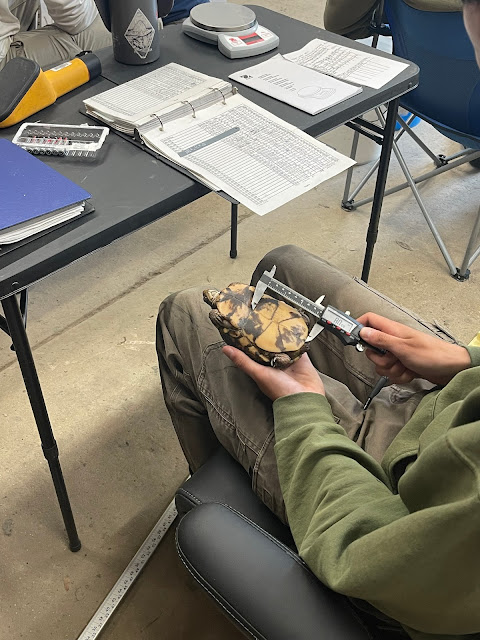Back in April, I was invited to assist University of Illinois researchers in searching for eastern massasauga rattlesnakes down in Clinton County (IL) for continued demography research. Never in a million years did I ever think I'd get the opportunity to see one of these incredible animals in Illinois - not just because they are exceedingly rare but because those in charge of managing the population are understandably tight-lipped about location specifics and whatnot. I was legitimately geeking out. My sole experience with a "wild" Illinois massasauga previous to this entailed seeing a recently-caught captive at the Grove when I was a kid back in the late 80s or early 90s (in fact there may have been two animals in the same enclosure but my memories are a bit fuzzy). That one was one of the last of the Cook County ratters.
Two weeks later I was down at the research base and tech housing with a couple of other invitees, meeting all of the young researchers and getting prepped to hit the fields. What struck me most was just how little habitat these snakes have available to them. Years ago when there were multiple massasauga populations in the state, the Clinton County population was regarded as the best. But that's relative to populations that were so small and threatened that they consequently disappeared. In Clinton County, the population has been widely split apart into mini-populations by roads, agricultural fields, and a big lake. In fact it was stunning to know that these animals could persist in these tiny shards of habitat.
Carefully transecting the first locale, we all stepped very gingerly, keeping our eyes peeled for massasaugas as they emerged from the crayfish burrows they utilized to bask in the late morning sun. At this time of year, the vegetation consisted mostly of dried prairie grasses, sometimes in thick clusters. A few bits of greenery were poking through, including rattlesnake master. We were all spread apart (as spread apart as we could be at such a small site) when one of the techs announced that he had found a massasauga. Everyone made their way over - the other techs in a careful and deliberate fashion, and me nearly tripping and falling into the mud. I was ecstatic. When I reached the tech, he pointed down at the snake.
I didn't see it.
Scanning the tangled mass of dried grasses below me, I thought and may have even asked out loud, "Where?" The tech pointed his snake hook down in the direction of the snake. A few more seconds of looking, and...THERE IT IS! Barely visible was a two to three inch section of massasauga showing through the dried brown grass. The tech was good. I would have walked right over it, I think. I now had the picture etched in my head to improve my approach at finding massasaugas. This first snake was carefully collected for processing at a later time.
Convening at a sauga spotting
I'll be completely honest in saying that the entire process looked to be pretty stressful on the animals. Between being caught and carried around for a few hours, each snake is (carefully) handled as briefly as possible although it still seems significant. BUT I'm not a herpetologist and this was my first rodeo. The head of the project has been carrying out this study for decades and I should trust his method. Ultimately the animals are placed back into the exact same spot they were found in, hopefully to reproduce and make more massasaugas.
The overall consensus is that the massasauga isn't doing well. There simply isn't enough space allocated for them. Snake fungal disease has taken its toll on the population, and people still kill them when they see them. Factor in natural predation, winter kills, and other uncontrollable factors, and you have an estimated expiration date for the Illinois animals (possibly during my lifetime but hopefully not). In my opinion, the loss of the massasauga throughout mostly all of the state and Midwest is one of the most devastating losses in the natural world, up there with the passenger pigeon and American elm. To me, no other snake better embodies the spirit of the prairie than the eastern massasauga. I was honored to be in their presence and humbled by the experience.















.JPG)